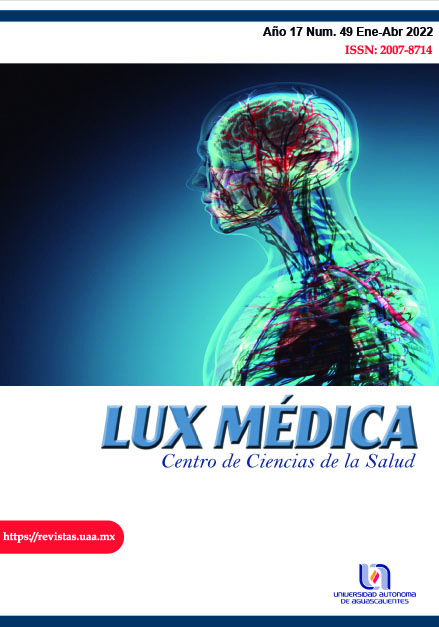Estado visual en niños con parálisis cerebral en el Centro de Rehabilitación e Inclusión Infantil Teletón Aguascalientes
DOI:
https://doi.org/10.33064/49lm20223274Keywords:
Parálisis cerebral, CRIT, Visión binocular, TeletónAbstract
ABSTRACT
Background: Strabismus, amblyopia and nystagmus are common visual findings in children with cerebral palsy (CP), accommodative insufficiency, oculomotor dysfunction and the most frequently refractive error reported is hyperopia. Children with severe motor disabilities are said to be at increased risk of visual deficits. Objective: Assessing visual status in children diagnosed with cerebral palsy (CP) Methods: An observational, descriptive study was conducted on 112 patients at Rehabilitation and Inclusion Center, Teletón, (CRIT Aguascalientes),. Results: 69% were male and 31% female. 55% had hyperopia, 10% emmetopia, 12% myopic astigmatism, 17% hypermetropic astigmatism, 4% myopia, 2% simple myopic astigmatism. 44% had strabismus, of which 21% were esotropia, 23% exotropia and 7% nystagmus. 30% reported fusion and stereopsis. 42% were suggested visual therapy, 20%optical correction and visual therapy, 4% visual therapy and occlusion, 10% only optical correction and 19% did not require any optometric treatment. Conclusion: CP was presented in a higher percentage in the male, 44% have good visual acuity, 55% of cases hyperopia, 44% strabismus, exotropia slightly higher than esotropia, nystagmus in 4% of cases, 45% oculomotor dysfunction, 30% fusion and stereopsis, 43% was indicated home visual therapy 20% optical correction and occlusion.
Downloads
Metrics
Published
How to Cite
Issue
Section
License
Copyright (c) 2021 MARÍA FERNANDA CORNEJO RUBALCAVA, FLOR DE ROCIO ZAMILPA VELAZQUEZ, DAVID MUÑOZ GUERRERO, ELIZABETH CASILLAS CASILLAS

This work is licensed under a Creative Commons Attribution-NonCommercial-ShareAlike 4.0 International License.
La revista Lux Médica está bajo una licencia de Creative Commons Reconocimiento-NoComercial-Compartir Igual 4.0 Internacional.















